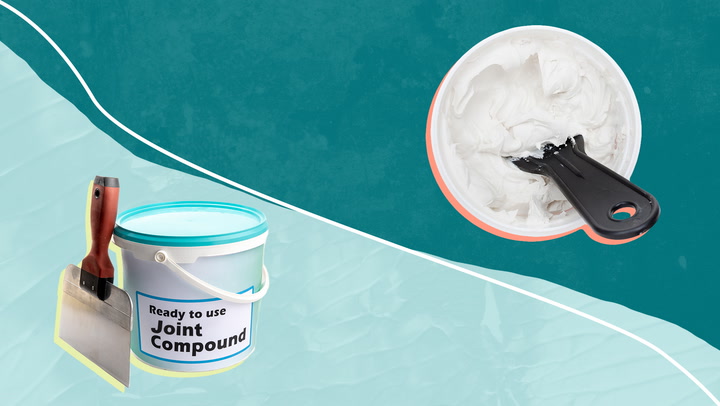
Joint compound is often used during drywall installation to fill any seams on walls and is thicker and takes longer to dry than spackle, often necessitating more sanding than spackle.
Spackle is designed for patching small holes and dents in walls. Usually composed of gypsum, an abundant soft-mined mineral used widely in construction, it may also include fine aggregate and vinyl as binding agents.
Joint compound tends to be cheaper per ounce than spackle, though price differences can depend on your choice of brand. Some boast special features like reduced shrinkage or non-clogging of sandpaper; these features may prove useful for professional builders but may not be necessary for DIY projects.
Joint compound (or "drywall mud") is an indispensable construction material used for wall repair and installation, composed of gypsum powder mixed with binder to give it its paste-like consistency. Local drywall professionals typically utilize it during initial installation of large sheets of drywall while covering seams between sheets; on the other hand, painters often opt for spackle to cover nail holes or imperfections on finished walls; both products can be easily found at home improvement stores - choosing which option best meets your project requirements will depend on both cost considerations as well as scope/area of repair work required - the choice between these products ultimately depends on your individual project scope/area needs to be repaired/repaired/repaired/repaired.
Joint compound and spackle are both frequently used in home repair projects, with joint compound often being chosen over spackle depending on the size and scope of a wall repair or construction job. While both consist of white paste-like material with similar drying times and shrinkage rates, spackle has advantages with respect to application and dry time as well as shrinkage rate.
Joint compound may be an ideal option when you need to fill holes larger than quarter inch, as its thicker consistency allows for easier application and spreading. Furthermore, its strength stands the test of time and should remain effective.
Joint compound is more versatile than spackle, as it can be used for an array of applications like drywall installation and seam work. Plus, there's more choices such as quick-setting compounds. Also used on plaster to create smooth surfaces ready for painting, its drying time may take more time for completion of projects.
Spackle is a water-based material that dries through evaporation. This makes it faster drying than plaster and other all-purpose compounds, which require longer to harden before they're ready to sand and paint - typically within 30 minutes or so.
Spackling and joint compound can both be used on drywall, but spackling is better suited for smaller jobs like filling nail holes and minor flaws. Furthermore, it dries faster and requires less sanding compared to joint compound.
Both products come in many different formulas and offer incremental improvements over traditional mud, while others make bold claims about reduced shrinkage and extended open time (via Lowes).
No matter which one you select, both materials are relatively cost-effective. Joint compound is more economical per ounce due to builders acquiring large amounts while homeowners typically purchase individual containers of spackling. This difference in pricing could add up over the course of an extensive project.
One of the key challenges associated with wall repair is choosing an appropriate product for each task at hand. Spackle is ideal for patching small dents, dings, and nail holes on walls; however, it may not be ideal when it comes to reworking seams or creating new walls.
Joint compound is frequently employed by professionals because of its versatility in covering large surfaces with multiple coats, and being very durable. Unfortunately, homeowners may find the lengthy dry times daunting, while its silica dust-producing capabilities may present potential health hazards.
Both spackle and joint compound are straightforward products to apply, but their formulas vary which can influence drying times, shrinkage rates and ease of application. Both products can be used for various repairs but it's important to read labels and follow instructions closely when working with these materials as the dust produced can pose breathing challenges. Whenever working with such substances it's wise to wear a face mask as dust can pose respiratory health hazards.
In conclusion, understanding the key differences between joint compound and spackle is crucial for any DIY enthusiast or professional in the field of home improvement. Both materials serve unique purposes and have their own advantages and disadvantages.
If you want to explore this topic further and learn more about the specific applications and uses of joint compound and spackle, be sure to check out this informative article on Archidrenaline. It offers detailed insights and expert advice to help you make the right choice for your next project. Happy renovating!